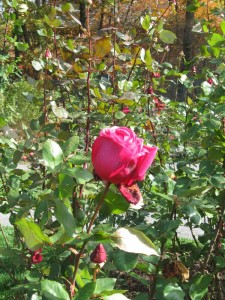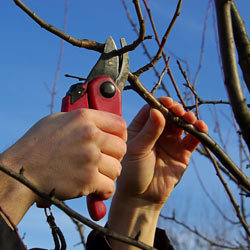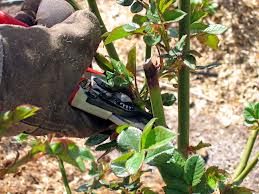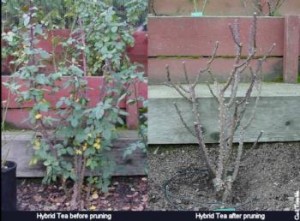Archive for Pruning
6 Lawn Treatment Tips From The Experts
You’ve created the perfect lawn in your outdoor space. The soil is fertile, and the grass is ideal for your area. But to keep your lawn in peak condition, it needs regular care. The following are six lawn treatment tips recommended by landscaping experts.
- Mowing

What’s the perfect length for lawn grass? That depends on your preference. However, for easy maintenance, you should not allow the grass to grow more than 10 cm.
Experts recommend trimming only one-third of the grass’s length. Cutting the grass too short increases the chances of drying, weed infestation, and disease.
- Edging
A neat lawn has well-defined edges. Use a sharp pair of shears to stop grass from growing over your borders. Edging not only promotes neatness but also gives your lawn a satisfying finish.
If possible, install permanent edging – a border that grass cannot grow over or cross.
- Watering
Inadequate watering causes the grass to change color. Besides, well-watered grass has a spring; it doesn’t remain flat after walking on it.
How much and often you need to water your lawn is dependent on the weather. Remember, overwatering is just as bad as underwatering. Soggy soil discourages healthy growth of roots.
For best results, water your lawn early in the morning.
- Feeding
Want a greener, healthier lawn? Feed the grass.
Nitrogen is particularly essential for vibrant and green grass. A soil test will help you determine the amount of nitrogen your lawn needs. Other essential nutrients include phosphate and potash.
The typical lawn requires feeding twice a year. In the spring, apply a nitrogen-rich fertilizer. In fall, it is advisable to feed your grass with high levels of potash and phosphate.
Whichever lawn feed you choose, strictly follow the guidelines on the package.
- Weeding
Weeds prevent the healthy growth of grass. The best method of weeding is uprooting – pulling the weed together with the roots. You can weed manually or using a tool. But in cases of severe weed infestation, you might need to use a low-toxicity herbicide.
- Removing thatch
Thatch refers to the organic matter, made up of dead leaves, grass, and stems, that forms a layer above the soil. The buildup of thatch prevents water and other nutrients from penetrating the soil.
Methods of removing thatch include raking and scarification. You can find a good rake or scarifier at your local gardening store.
Keep your lawn lush, green, and healthy using the lawn treatment tips shared above.
Three Irrigation System Maintenance Tips To Grow Green Grass
It is always amazing to see your landscape thrive with green grass. However, the work that goes into ensuring that your landscape remains as healthy as you want it to be should never be ignored. Among the easily forgotten parts of landscaping is the maintenance of irrigation systems. Without enough care, a damaged irrigation system can result in your lawn getting excessively irrigated or failing to get enough water.
Here is how to maintain your irrigation system:
Perform Regular Checkups

You should inspect your irrigation system a couple of times each season. Ideally, the first check should be at the start of the season, with the next one somewhere in the middle. If possible, try checking the system each month. You should confirm that the controller is plugged in and functional, correct the date and time, ensure that the wires and connectors are still connected, and replace the backup batteries. Also, it might be ideal to turn on each individual green grass zone, checking for damage and leaks.
Flush The System Regularly
If left unattended, your irrigation system can become clogged. Clogging can arise from the accumulation of debris, as well as the use of contaminated water and regular wear and tear. Before the start of any season, flush your irrigation system to get rid of this accumulated debris.
This will allow water to flow smoothly through the pipes as well as the nozzles. Aside from flushing, take measures that increase the efficiency of the system’s filtration, install screens on every sprinkler head, and replace any clogged nozzles.
Take Care Of The Sprinkler Heads
Assuming that your irrigation system’s sprinkler heads are in splendid shape can be a mistake. Sprinkler heads go through wear and tear throughout their lifetime, which increases their chances of the sinking or the breaking of the heads.
Some of the key reasons behind wear and tear include damage from lawnmowers, improper installation, shifting of the soil, and regular wear and tear. For you to maintain them optimally, you should replace the missing or damaged heads before proceeding to water your lawn. It is better to install your irrigation system on swing pipes as there is a reduced chance of damage since they ‘float’ within the soil.
A damaged irrigation system might be the reason behind your grass having brown spots, or failing to grow healthily from being overwatered. Other than ensuring that you can enjoy green grass, maintaining your irrigation system also helps preserve water. For a better experience watering your lawn, consider purchasing smart irrigation systems. Contact us for more information.
Make a Date With Your Roses
Have you pruned your Hybrid Tea Roses lately? Pruning your roses back by 80% while they are dormant is the optimal time. Not only will it produce tidier plants, but will stimulate new, stronger, better-flowering growth and eliminate the nasty old stuff that harbors pests and diseases.
DK Landscaping provides you a step-by-step guide to getting the best blooms out of these traditionally beloved plants:
1. Wait until your roses are dormant. If the climate where you live is moderate, roses may never go into full dormancy or lose their leaves completely.

Hybrid Tea Roses
3. Remove all deadwood by cutting out all unhealthy canes. This means dead, diseased or damaged growth. Roses are sensitive to winter frost and the rest of the year are attacked by dozens of fungi, insects, molds, and bacteria.

Remove Deadwood
3. Prune to ensure that the center of the bush is open for maximum air circulation. That is, cut out stems that fill up and cross through the center. Remove any branches that are less than the thickness of a pencil, and remove any branches that cross or rub together. Train the rose to grow outwards.

Create Air Space to Prevent Disease
4. Make all cuts above a leaf bud that points towards the outside of the plant. Make all cuts clean – not jagged cuts, as this will allow insects and disease into the plant and open it up to infection. Always prune to a healthy bud. Make sure your cut is at a 45 degree angle going away from the bud.
5. To ensure your plants remain healthy, we recommend painting all cuts with a sealing compound because the plant is not actively growing and can’t defend itself as well against diseases and pests.

Sealing Compound
6. Your Hybrid Tea Roses should look like this after it has been pruned (v shaped).

Hybrid Tea Rose Before and After Picture
For the best results, DK Landscaping recommends pruning your roses before Valentine’s Day! So put on a long-sleeved shirt and gloves and grab some sharp pruning shears and make a date with your rose or give DK Landscaping a call at (707) 280-3632 to get your hybrid tea roses bearing the champion flowers that it was meant to be by spring!






